…by James Morris…
The great “controlled drinking” debate has a controversial history dating back to the 1960’s. Since then, politics, addiction ideology, and evidence have often been hard to separate. In the 1970’s the Sobells were vilified for allegedly skewing the results of research showing that some dependent drinkers achieved controlled drinking, but they were later cleared of any wrongdoing. Audrey Kishline, the founder of Moderation Management (a peer support group), committed suicide after driving drunk and causing a fatal car crash. This tragic event is often cited as an example of how moderation doesn’t work.
Today, recognition of non-abstinence-oriented outcomes is less controversial. However, there is still no shortage of opponents, and not just amongst 12-steppers. Like many complex issues, the “truth” about controlled drinking may depend on which way you cut the cake.
I first became interested in this subject when after many years of abstinence I began to ask myself “could I re-learn to drink?” My relationship with alcohol had started in my early teens and then steadily  progressed; by the time I was in my early twenties I drank as much as possible, often to the point of blackout, and was experiencing physical health problems. After a number of failed attempts to cut down, I began to realise I wasn’t in control. I remember thinking to myself “if I don’t act on this now, where will it end?”
progressed; by the time I was in my early twenties I drank as much as possible, often to the point of blackout, and was experiencing physical health problems. After a number of failed attempts to cut down, I began to realise I wasn’t in control. I remember thinking to myself “if I don’t act on this now, where will it end?”
Stopping drinking in my twenties was very difficult. During my early months of sobriety I struggled to stop thinking about alcohol and battled with trying to reformulate my identity and social life. Drinking pressures and cues seemed to surround me constantly, but in some ways this made me more determined.
As time passed things slowly became easier and more normal as a “non-drinker,” though initially I sought various other pursuits to try and fill the excitement gap. I also attended AA meetings for a while. Generally I found the meetings positive and could identify with a lot of what I heard, though ultimately I never felt I was powerless and therefore an “alcoholic.”
Around six years later I felt like I was in a very different place, settled with a rewarding job, happier in myself as a person and as a “non-drinker.” During this time psychotherapy helped a lot, especially with  anger issues connected with my past drinking. I began to feel things were so different now that normal drinking might be possible, and after a few years of contemplation, I eventually decided to see if I could “re-learn” a problem-free relationship with alcohol.
anger issues connected with my past drinking. I began to feel things were so different now that normal drinking might be possible, and after a few years of contemplation, I eventually decided to see if I could “re-learn” a problem-free relationship with alcohol.
Many people still believe anyone with an alcohol addiction can never drink again without slipping back into old habits. The disease model of addiction as a “chronic relapsing condition” and associated beliefs about “alcoholics” are deeply entwined with the idea that abstinence is the only genuine option for long-term recovery.
There are some valid reasons to be skeptical of controlled drinking for once-dependent drinkers. Long-term studies suggest only a minority of problem drinkers achieve controlled or problem-free drinking, and for people with severe alcohol addiction, abstinence is usually identified as the most successful route. Indeed, severity of dependence is a central theme in addiction theory and in the concept of “alcohol dependence syndrome” that underpins ICD-10 and DSM classifications. Even so, some controlled-drinking studies have observed success in a subset of drinkers with more severe dependence. Whilst some argue that those with less severe dependence are not really “addicted,” there is no scientifically valid cut-off point.
In fact, the role of severity of dependence as a predictor of controlled drinking is unclear. Some studies have found other measures, like the extent of “impaired control” — i.e. failing to limit one’s drinking — serve as better predictors. Another important factor may be a period of abstinence. A drinker who has had many years without drinking will be more likely to succeed than one who simply tries to cut down straight away. How much of this may be about the brain “un-learning” drinking reward pathways — and how much may be about life changes and other skills that sobriety brings about — is again hard to generalise.
 I began controlled drinking six years ago, and despite anxieties that I was doing the wrong thing, there are no signs that my relationship with alcohol has become problematic again. I might drink three times a week, typically with a meal, on weekends, or out with friends, and not more than two or three drinks on an occasion — within the UK’s recommended guidelines.
I began controlled drinking six years ago, and despite anxieties that I was doing the wrong thing, there are no signs that my relationship with alcohol has become problematic again. I might drink three times a week, typically with a meal, on weekends, or out with friends, and not more than two or three drinks on an occasion — within the UK’s recommended guidelines.
However, comparing myself then and now feels like comparing two different people. Then I was young and in many ways insecure, anxious and with a lot of fire in my belly. Drinking always felt like it allowed me to let go of this nervous energy. I believe that working through past issues through psychotherapy was as crucial as my long period of abstinence. I strongly feel that this process helped me deal with issues that fuelled my destructive drinking.
Trying to answer “when is controlled drinking possible?” is a bit like asking “what’s the best treatment for addiction?” — there are no easy answers; it depends on many factors. But there are some basic principles that might help predict success. Fundamentally, it may be fair to generalise that controlled drinking tends to be less successful for people who’ve been more severely dependent, experienced adverse childhood experiences, previously failed to control their drinking, or endured excessive insecurity or stress in their lives.
To anyone with a history of alcohol problems contemplating controlled drinking, I would suggest they ask themselves what it is they truly want or expect from drinking again. Weighing up the pros and cons  objectively can be difficult, and it can be easy to over-value the pleasurable effects of moderate drinking. For me alcohol may have a mild relaxant effect, but it is not to de-stress, let go, or suppress negative emotions. If I go through a tough time in the future, I believe that will be an important time not to drink. Keeping healthy and looking after myself in other ways provide protective effects that allow me to drink without problems.
objectively can be difficult, and it can be easy to over-value the pleasurable effects of moderate drinking. For me alcohol may have a mild relaxant effect, but it is not to de-stress, let go, or suppress negative emotions. If I go through a tough time in the future, I believe that will be an important time not to drink. Keeping healthy and looking after myself in other ways provide protective effects that allow me to drink without problems.
The author is in no way encouraging those with former alcohol problems to attempt “controlled drinking.” The author wishes to reiterate that controlled drinking is not suitable for many drinkers who seek help for alcohol problems, and anyone considering controlled drinking should consider the possible benefits of professional help.
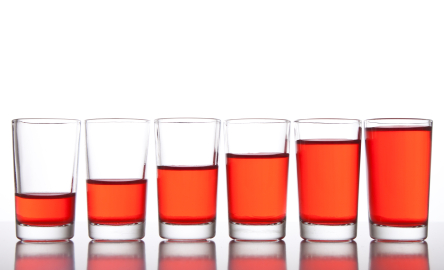

 Currently, only medical marijuana is legal in Canada under its
Currently, only medical marijuana is legal in Canada under its 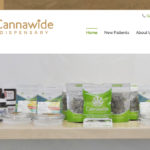 to medical marijuana only through licensed producers with a medical document signed by an authorized healthcare practitioner.
to medical marijuana only through licensed producers with a medical document signed by an authorized healthcare practitioner. Yet it is interesting to note that some smokers may experience withdrawal
Yet it is interesting to note that some smokers may experience withdrawal  symptoms that can cause a
symptoms that can cause a  imprisonment. Possession of marijuana penalties range from a 6 month and $1000 fine (for up to 30 g) to 5 years less a day in prison.
imprisonment. Possession of marijuana penalties range from a 6 month and $1000 fine (for up to 30 g) to 5 years less a day in prison. author’s law firm) has put together
author’s law firm) has put together 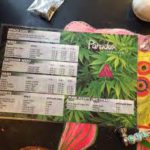 From the Netherlands, which allows users to smoke in openly accepted, though illegal, marijuana cafes, to Portugal, where all drugs were decriminalized and addiction treatment programs aggressively implemented, the infographic explores the nuances in soft drug policies. In the USA, though five states have legalized marijuana medically and recreationally, it still has yet to be fully legalized across the country.
From the Netherlands, which allows users to smoke in openly accepted, though illegal, marijuana cafes, to Portugal, where all drugs were decriminalized and addiction treatment programs aggressively implemented, the infographic explores the nuances in soft drug policies. In the USA, though five states have legalized marijuana medically and recreationally, it still has yet to be fully legalized across the country.
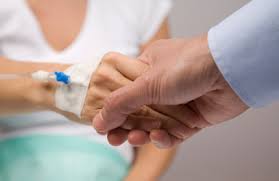
 to have a NTX implant, to increase the chances that they would get through the crucial and often difficult first couple of months, when relapse rates are highest. We did around 2000 home detoxes before one family fatally misunderstood the instructions. Naturally, I feel bad about that but I don’t feel bad about trying to devise affordable treatment. I think that case made the difference between a reprimand and being removed from the register, but many addiction clinicians and academics in Britain (and several abroad who gave evidence for me) will tell you that the establishment were out to get me and were looking for excuses.
to have a NTX implant, to increase the chances that they would get through the crucial and often difficult first couple of months, when relapse rates are highest. We did around 2000 home detoxes before one family fatally misunderstood the instructions. Naturally, I feel bad about that but I don’t feel bad about trying to devise affordable treatment. I think that case made the difference between a reprimand and being removed from the register, but many addiction clinicians and academics in Britain (and several abroad who gave evidence for me) will tell you that the establishment were out to get me and were looking for excuses. If Marc thinks I look a bit weird in some of the online images, that’s probably because they were taken when I was trying to force my way through a rat-pack of paparazzi after the final hearing. Fortunately, the clinic I set up continues and is still doing most of the things that we had been doing up to the hearings. Some of those — e.g. using slow-release morphine for people who don’t get on well with methadone or buprenorphine — are now pretty normal, at least outside the USA. The clinic is also expanding its patient groups to include the growing problem — though it’s still small by US standards — of prescription opiate abuse and the management of ‘therapeutic addiction’ to opiates in pain problems. I only have an advisory role these days but we hope to extend what Emmanuel and I suggested should be called ‘Antagonist-Assisted Abstinence’ (AAA – geddit?) to benzodiazepines. Using s/c or slow i/v flumazenil infusions, it’s quite easy to take people off fistfuls of diazepam and other benzodiazepines in five days with very little discomfort, and a flumazenil implant is being developed in Australia.
If Marc thinks I look a bit weird in some of the online images, that’s probably because they were taken when I was trying to force my way through a rat-pack of paparazzi after the final hearing. Fortunately, the clinic I set up continues and is still doing most of the things that we had been doing up to the hearings. Some of those — e.g. using slow-release morphine for people who don’t get on well with methadone or buprenorphine — are now pretty normal, at least outside the USA. The clinic is also expanding its patient groups to include the growing problem — though it’s still small by US standards — of prescription opiate abuse and the management of ‘therapeutic addiction’ to opiates in pain problems. I only have an advisory role these days but we hope to extend what Emmanuel and I suggested should be called ‘Antagonist-Assisted Abstinence’ (AAA – geddit?) to benzodiazepines. Using s/c or slow i/v flumazenil infusions, it’s quite easy to take people off fistfuls of diazepam and other benzodiazepines in five days with very little discomfort, and a flumazenil implant is being developed in Australia. months off for withdrawal — are being put on forced reductions. I never claimed to be perfect (as we say in the trade, ‘if you haven’t made any mistakes. you’re not seeing enough patients’) but I don’t think that anything I did caused remotely as much misery and disaster to opiate addicts as the policies encouraged by the addiction establishment in the face of mounting evidence for the value of methadone-maintenance treatment.
months off for withdrawal — are being put on forced reductions. I never claimed to be perfect (as we say in the trade, ‘if you haven’t made any mistakes. you’re not seeing enough patients’) but I don’t think that anything I did caused remotely as much misery and disaster to opiate addicts as the policies encouraged by the addiction establishment in the face of mounting evidence for the value of methadone-maintenance treatment.
 or to our community. We want the resulting ambivalence and cognitive dissonance to go away. So we put the addiction in a compartment, over to the side in our psyche. A little box of respite and relief when we need it, and no one else needs to know about it or disapprove.
or to our community. We want the resulting ambivalence and cognitive dissonance to go away. So we put the addiction in a compartment, over to the side in our psyche. A little box of respite and relief when we need it, and no one else needs to know about it or disapprove. Our recovery is under control: it’s in a box. But unlike addiction, our recovery compartment doesn’t usually leak. It just sits there. It doesn’t become the central part of our daily life that the addiction was. In fact, with recovery, compartmentalization poses the opposite threat: the danger that it may dry up and disappear if left in its box.
Our recovery is under control: it’s in a box. But unlike addiction, our recovery compartment doesn’t usually leak. It just sits there. It doesn’t become the central part of our daily life that the addiction was. In fact, with recovery, compartmentalization poses the opposite threat: the danger that it may dry up and disappear if left in its box. leaves a very big hole that something else needs to fill. If nothing fills that hole, whatever it is we quit is going to come back. A compartmentalized approach to recovery is not enough to allow the strands of workable change, the tendrils of real transformation, to be established and maintained.
leaves a very big hole that something else needs to fill. If nothing fills that hole, whatever it is we quit is going to come back. A compartmentalized approach to recovery is not enough to allow the strands of workable change, the tendrils of real transformation, to be established and maintained. can troubleshoot and collaborate to solve problems as they arise. There is the feeling that we are all in this together, all on the same team. When we feel this way, alienation tends to dissolve, and the need to compartmentalize, to control, lightens up. It’s safe for our recovery to emerge from its box, like a butterfly from its cocoon.
can troubleshoot and collaborate to solve problems as they arise. There is the feeling that we are all in this together, all on the same team. When we feel this way, alienation tends to dissolve, and the need to compartmentalize, to control, lightens up. It’s safe for our recovery to emerge from its box, like a butterfly from its cocoon.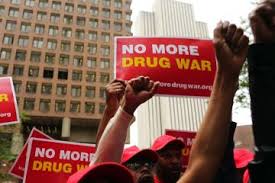
 to one extent or another. They both kill many times more people each year than all illegal substances combined, even in the midst of the opiate “epidemic”. Yet, we manage to find
to one extent or another. They both kill many times more people each year than all illegal substances combined, even in the midst of the opiate “epidemic”. Yet, we manage to find 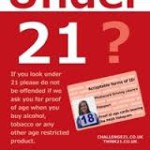 (admittedly imperfect) ways to deal with the harms they cause as best we can. We do this because we recognize that the harms of prohibiting these substances would likely be significantly greater than simply finding more effective ways to live with them.
(admittedly imperfect) ways to deal with the harms they cause as best we can. We do this because we recognize that the harms of prohibiting these substances would likely be significantly greater than simply finding more effective ways to live with them. steadily each year — making it the #2 cause of preventable death (behind good ole’ tobacco). And the data strongly suggest that households with just one obese parent are at least twice as likely to raise obese children who are doomed to a shorter life expectancy than their parents. Using drug war logic, this ought to be as good a reason as any to criminalize obesity or the behaviors (and foods) that “cause” it.
steadily each year — making it the #2 cause of preventable death (behind good ole’ tobacco). And the data strongly suggest that households with just one obese parent are at least twice as likely to raise obese children who are doomed to a shorter life expectancy than their parents. Using drug war logic, this ought to be as good a reason as any to criminalize obesity or the behaviors (and foods) that “cause” it. Sound crazy? That’s how crazy drug criminalization and drug courts seem to me now. Having dealt with my daughter’s heroin addiction for the past five years, it really hit me, after her most recent “relapse” (for lack of a better term) a little over a year ago, that it wasn’t so much her
Sound crazy? That’s how crazy drug criminalization and drug courts seem to me now. Having dealt with my daughter’s heroin addiction for the past five years, it really hit me, after her most recent “relapse” (for lack of a better term) a little over a year ago, that it wasn’t so much her  addiction that was causing the pain and trauma we were both experiencing as it was dealing with the woefully ineffective — and often counterproductive and EXPENSIVE — U.S. legal and treatment systems.
addiction that was causing the pain and trauma we were both experiencing as it was dealing with the woefully ineffective — and often counterproductive and EXPENSIVE — U.S. legal and treatment systems. Because while we labor under the delusion that prohibiting a given substance outright is the ultimate form of control, it is in fact the mechanism by which we relinquish all control to criminals, who have in turn been empowered by such policies to build massive global organizations. The only way to undercut that power is to minimize the enormous profits that are generated by prohibitionist policies.
Because while we labor under the delusion that prohibiting a given substance outright is the ultimate form of control, it is in fact the mechanism by which we relinquish all control to criminals, who have in turn been empowered by such policies to build massive global organizations. The only way to undercut that power is to minimize the enormous profits that are generated by prohibitionist policies. the case of opioids, prevention of leakage or diversion to others, policies for supervision and safety, and strict constraints on who might be eligible for prescriptions. One model of a successful quasi-legalization policy comes from Switzerland, which implemented heroin-assisted treatment (HAT) with great success to stem the tide of its own heroin epidemic in the late 1980s and early 1990s. Here is a brief description of the outcome from
the case of opioids, prevention of leakage or diversion to others, policies for supervision and safety, and strict constraints on who might be eligible for prescriptions. One model of a successful quasi-legalization policy comes from Switzerland, which implemented heroin-assisted treatment (HAT) with great success to stem the tide of its own heroin epidemic in the late 1980s and early 1990s. Here is a brief description of the outcome from 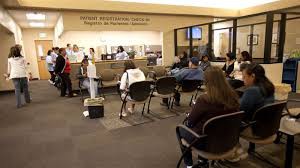 given your heroin there, for free, where you use it supervised by a doctor or nurse. You are given support to turn your life around, and find a job, and housing.
given your heroin there, for free, where you use it supervised by a doctor or nurse. You are given support to turn your life around, and find a job, and housing.